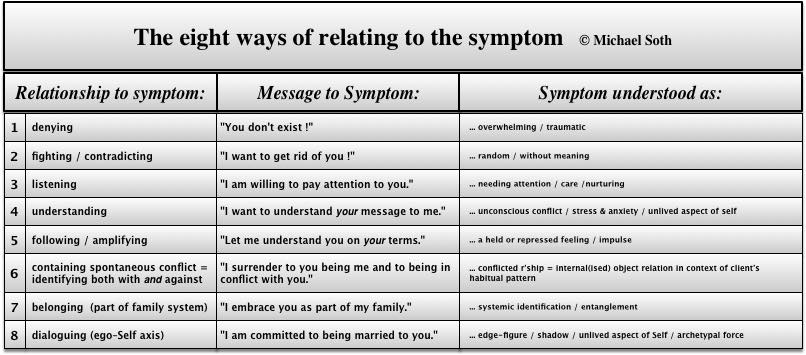There are two different ways in which you can display the forthcoming events (use the drop-down menu on the right to switch between them): Agenda and Month.
To see all events and display earlier or later time periods, click the < or > next to the calendar icon on the left.
You can use the Categories and Tags drop-down menu to filter the display and restrict it to certain kinds of events. To de-select categories or tags and show all events, click the crossed circle next to the currently displayed category.
View a sequential listing of events by date, including their titles, date and time details. By clicking on the plus-sign on the right, you can expand the panel to see the full workshop/event description - at the bottom you find a button saying "Read more ..." - follow that to the dedicated page with all the event details.
View a month at a time in calendar format, with events displayed on the relevant day. Click the title of the event to follow the link to the full event details.
None of these previous listings include proposed events - there is a separate page for those in the menu: Proposed Events.

Finding your own style within the spectrum of 21st-century psychotherapy
“Beyond our ideas of right-doing and wrong-doing,
there is a field. I’ll meet you there.
When the soul lies down in that grass,
the world is too full to talk about.”
Rumi
In this session I will invite you to explore the therapeutic space beyond notions of right or wrong, beyond ideas of best theory, correct technique, practice by the book or manual.
I will invite you to use all your faculties, all your knowledge, all your woundedness and sensitivity to get a flavour of your own therapeutic style, that is free to draw fluidly and integratively from the wealth of therapeutic knowledge and expertise humans have accumulated.
As C.G. Jung said: “There should only be one Jungian therapist – me.”
Everybody else - including you and me - we need to find our own style, rooted in our own relational complexity and embodied in our own history, wounds and limitations as well as gifts and potential. As we can only find this in the moment, rather than through thinking or theory only, this session will weave between experience and reflection, between skills practice and discussion, engaging you with your next step at your growing edge.
We may draw from the following themes what seems most relevant and urgent.
Creating an open, inviting therapeutic space
‘Nothing human is foreign to me.’
What gets in the way of full engagement?
What limits the client’s experience of the therapeutic space?
Phenomenological enquiry into the therapist’s internal process: how is the therapist behaving habitually in ways that are, for example, fixed, limited, restrained, unresponsive or overly-giving?
Focussing on the therapist’s ‘construction’ of the therapeutic space.
Creating an effective transformative therapeutic space
‘Allowing the client’s unconscious to construct me as an object.’
What limits a full and deeply transformative process?
Phenomenological enquiry into the therapist’s external effects: how are the therapist’s responses/interventions countertherapeutic?
The doctor-friend polarity
therapy as treatment (‘medical model’) versus therapy as collusive friendship
objectifying/pathologising versus colluding/avoidant
therapy as relationship
objectifying – differentiating – identifying – colluding
The client’s conflict: habitual mode versus emergency
‘something desperately has to happen’ – ‘nothing has to happen/nothing to be imposed’
the client’s character conflicts / the ego-Self axis
A broad-spectrum integration of approaches
The shattered and fragmented postmodern wholeness
Drawing on the gifts and wisdom of the whole field (fragmentation of the field reflects the fragmented modern psyche – the integration of the client’s psyche into wholeness requires the integration of the whole field)
The history of schisms and conflicts in the psychotherapeutic field and how it affects us now
integration and dis-integration
cherry-picking approaches versus full-spectrum integration
therapeutic approach cannot be grasped by theory and technique – underlying implicit relational stance
The therapist’s habitual, wounded, fixed position
Moving beyond a one-dimensional therapeutic position
The wounded healer position
The therapist’s habitual position – inheriting the wounds of our family ancestors, our therapeutic ancestors, or cultural ancestors …
The therapist’s shadow
The dangers of integration
Shifting from therapeutic approaches to relational modalities
Gomez, Stark, Clarkson, Michael’s Diamond model: what kind of therapeutic relatedness?
Gomez: humanistic ‘alongside’ stance versus psychodynamic ‘opposite’ stance
Stark: ‘one-person psychology’, ‘one-and-a-half-person psychology’, ‘two-person psychology’
Clarkson: working alliance – authentic – reparative – transference/countertransference - transpersonal
Michael’s Diamond model: include ‘medical model’
understanding identifications - projective identification – transference and countertransference as systemic bodymind processes
Transcending dualisms and binaries into paradox
the relational paradox: transcending treatment versus relationship dualism = paradox of enactment
I-it and I-I relating
the bodymind paradox: transcending mind-over-body versus body-over-mind dualism = embodiment/disembodiment paradox
the central paradox of therapy: the healing of the client’s wounding is inseparable from the enactment of wounding in and through therapy.
The fractal self: a chain of nested matrices of parallel process
integrative/integral
relational
embodied
systemic
paradoxical
The bodymind connection in working with psychosomatic and physical symptoms
A weekend workshop in Athens with Michael Soth
 Even though counsellors and psychotherapists are traditionally expected to focus on emotional, mental and verbal communications, many clients invariably do bring their physical and psychosomatic symptoms into the session.
Even though counsellors and psychotherapists are traditionally expected to focus on emotional, mental and verbal communications, many clients invariably do bring their physical and psychosomatic symptoms into the session.
Through including body-oriented ways of working into the talking therapies, we can learn to work with many of these symptoms more directly, more deeply and more effectively (and recognise other situations where the hope of curing illness through psychology is an unreasonable idealisation).
This CPD workshop is designed to expand your understanding of the bodymind connection as well as offering a wide range of creative and body-oriented techniques to include in your practice.
With some illnesses - like hypertension, chest and heart problems, digestive illnesses, symptoms of the immune system - it is scientifically established that emotional stress contributes to their origin. With many other psychosomatic problems, like all kinds of pain, tinnitus, insomnia, chronic fatigue and many other unexplained symptoms, it is known that the intensity of the suffering can be ameliorated through psychological therapy that addresses the regulation and expression of emotion and de-stresses the mind.
Stress is the catchall phrase that supposedly explains the influence of our psychological body-emotion-mind state on illness. However, what is less well understood, is how our bodymind does not just respond to stresses in our current situation and lifestyle, but carries accumulated stress from the past, reaching all the way back to childhood. A holistic and bio-social-psychological understanding of stress needs to include lifelong patterns of the bodymind including developmental injury and trauma (what Wilhelm Reich originally called character structures).
Sometimes clients bring psychosomatic illness as a presenting issue to the therapy, sometimes these symptoms actually evolve in direct response to the unfolding therapeutic process, and the therapist gets implicated in them, e.g. “After last session I had a headache for three days!”
Direct links to body sensations and symptoms as well as body image come up as part of our work in sessions every day, in so many ways: tangible pains, tensions, trembling and shaking, breathing difficulties (hyperventilation, asthma), the physical side of unbearable feelings like panic, rage, dread or terror. There are obvious somatic aspects to presenting issues such as eating disorders or addictions. And then there are the psychological implications of actual, sometimes terminal, illnesses and psychosomatic symptoms and dis-ease.
How do we work with these issues and symptoms in psychotherapy? What ways are available to us for including the client’s ‘felt sense’, their embodied self states, their body awareness and sensations, their physiological experience in the interaction ?
This workshop will give you a framework for thinking about the role of the body as it is relevant in your own style of therapeutic work, based upon the different ways in which clients as well as therapists relate to ‘the symptom’. Throughout the workshop, we will use roleplay of actual issues and dilemmas brought up by your clients. We will also identify and practice ways in which you can explore the emotional function and 'meaning' of your client's physical symptom or illness.
Drawing on a wide range of humanistic and psychoanalytic approaches (including Body Psychotherapy, Process-oriented Psychology, various schools of psychoanalysis and Jungian perspectives) as well as the holistic paradigm underpinning most complementary therapies, we will weave together an interdisciplinary bodymind approach which is applicable within the therapeutic relationship as we know it in counselling and psychotherapy.
Michael has been working with the psychological and bodymind connection of illness and psychosomatic symptoms for many years. In the 1990s he initiated a project called 'Soul in Illness', offering an integrative psychotherapeutic perspective, drawing on the wisdom which the different therapeutic approaches have accumulated regarding illness, both in terms of theoretical understanding and practical ways of working. He has run CPD workshops for therapists on ‘Working with Illness’ many times, and has developed a relational and embodied way of engaging with the client’s bodymind. In 2005 he presented for the first time his model of ‘8 ways of relating to the symptom’, which addresses the client’s own relationship to their symptom, as well as giving an overview of the different stances taken by the therapist in the various therapeutic approaches that correspond to each of the ways of relating to the symptom. These eight ways of relating to the symptom, including the corresponding theoretical understandings as well as methods and techniques for intervention, will form the underlying framework for this workshop.

Now he worships at an altar of a stagnant pool
And when he sees his reflection, he’s fulfilled
Oh, man is opposed to fair play
He wants it all and he wants it his way.Bob Dylan: License To Kill
Narcissism has a reputation for being notoriously difficult to engage with in therapy, for a variety of good reasons, not least because the very idea of ‘needing’ therapy is a humiliating insult to the grandiose self. As one of the key modern ‘disturbances of the self’, narcissism has replaced Victorian repression as the psychological disease of the age, which means that the original theories of our discipline from 100 years ago no longer quite apply. As a dominant collective issue, as exhibited by the celebrity culture all over the world and all over the media, the term ‘narcissism’ has entered pop psychology and lost all precision and meaning. In order to be clinically useful, we need to have a clear, circumscribed definition of narcissism, and its origins and manifestations.
Beyond commonplace over-simplifications, the various therapeutic traditions have widely divergent ideas and theories about narcissism, leading to quite contradictory recommendations for therapists. More than many other issues, therefore, narcissism requires an integrative stance, that can draw insights and understanding from the various approaches and combine them, to provide a comprehensive understanding and therapeutic response.
Because the narcissist tries to approximate an image of perfection (attempting to manifest a grandiose self), this leads to a chameleon-like disconnection from the body, and an objectifying, ‘perfecting’ treatment of it. For many celebrities, the body becomes an advertisement of the False Self, treated like one more fashion accessory. More than many other issues, therefore, narcissism calls for an embodied therapy, reconnecting the person to pleasurable, ordinary human reality, rather than pursuing the delusions of a disembodied virtual self.
Because the narcissist was emotionally ‘used’ by their parent(s), their individuality was never fully seen and mirrored. Therefore, in the moment where we apply a generic diagnostic label and put the narcissist into the same category with many others, we are re-inflicting a lack of individual mirroring. More than any other issue, narcissism reveals some of the shadow aspects and weaknesses of our discipline. In order to make therapy possible, we cannot afford to rely on a reasonable and supposedly realistic ego-ego alliance: we need a working alliance both with the wounded, insignificant self as well as the inflated grandiose self.
This course will provide condensed understanding extracted from the various therapeutic approaches, specifically drawing from and integrating the various psychoanalytic, the humanistic-embodied and the Jungian traditions. We will combine the theoretical input with practical, experiential work, based upon vignettes and case illustrations volunteered by participants, to explore how these ideas may be applied in practice.
We will be drawing on the following literature:
- Jacoby, Mario (2013, Reprint edition) Individuation and Narcissism: The Psychology of Self in Jung and Kohut. Routledge.
- Johnson, S. M. (1987) Humanizing the Narcissistic Style. W.W. Norton.
- Johnson, S. M. (1994) Character Styles. W.W. Norton.
- Kohut, H. (2009) The Analysis of the Self: A Systematic Approach to the Psychoanalytic Treatment of Narcissistic Personality Disorders.
- Kohut, H. (2009) The Restoration of the Self.
- Kernberg, O. (1984) Severe Personality Disorders: Psychotherapeutic Strategies. Yale University Press.
- Kernberg, O. (1996) Borderline Conditions and Pathological Narcissism. Jason Aronson.
- Otto Kernberg, On Narcissism: https://www.youtube.com/watch?v=pyP92WLLqIU ; https://www.youtube.com/watch?v=GeVMtZns5Pw
- Lowen, A. (2004) Narcissism: Denial of the True Self. Touchstone.
- Schwartz-Salant, N. (1982) Narcissism and Character Transformation. Inner City Books.
- Shaw, D. (2013) Traumatic Narcissism: Relational Systems of Subjugation. Routledge.
- Twenge, J.M. & Campbell, W.K. (2010) The Narcissism Epidemic: Living in the Age of Entitlement. Free Press.

